Look Book Issue 3 | Be Well 20/20 | Movement Chair Yoga

reducing stress & improving focus with Chair yoga
Yoga pairs movement with breath, maximizing the physical and mental benefits. More than just an exercise, many aspects of yoga can be incorporated into our daily lives – even our work routines.The following poses will help you incorporate movement and activation into your work life – specifically focusing on problem areas for office workers: spine, hips, neck, wrists and eyes.
THE BASICS
Breath: One of the simplest ways to reduce anxiety, stabilize blood pressure, increase energy and relax muscles is through breath. In yoga, each movement is paired with a breath. Try practicing a gentle breath that’s both relaxed and energized – in through the nose, out through the nose.
Posture: Proper alignment can help prevent stress on joints and muscles during physical activity. Before practicing any of the following movements, it’s important to discover your best posture. Begin with a fully erect spine, then roll your shoulders back and tuck your tailbone toward the ground. You should feel your core engage.
Gaze: Exposed to more information and stimulation than ever before, our brains are tired. Practicing office chair yoga can be time to unplug, even if it’s only for a few minutes, a few times a day. Keeping your eyes closed or practicing a gentle gaze can reduce stress, ease your senses and allow your brain to rejuvenate.
SPINE
Practicing spinal flexibility increases circulation and supplies nerves with the appropriate oxygen and nutrients for optimal function. The spine naturally moves in six ways: forward and backward, side to side, and rotationally to the left and right. Unfortunately, in traditional office settings, workers are lucky if they experience two types of spinal movements in a day. The following poses can yelp you incorporate all these spinal movements at work.
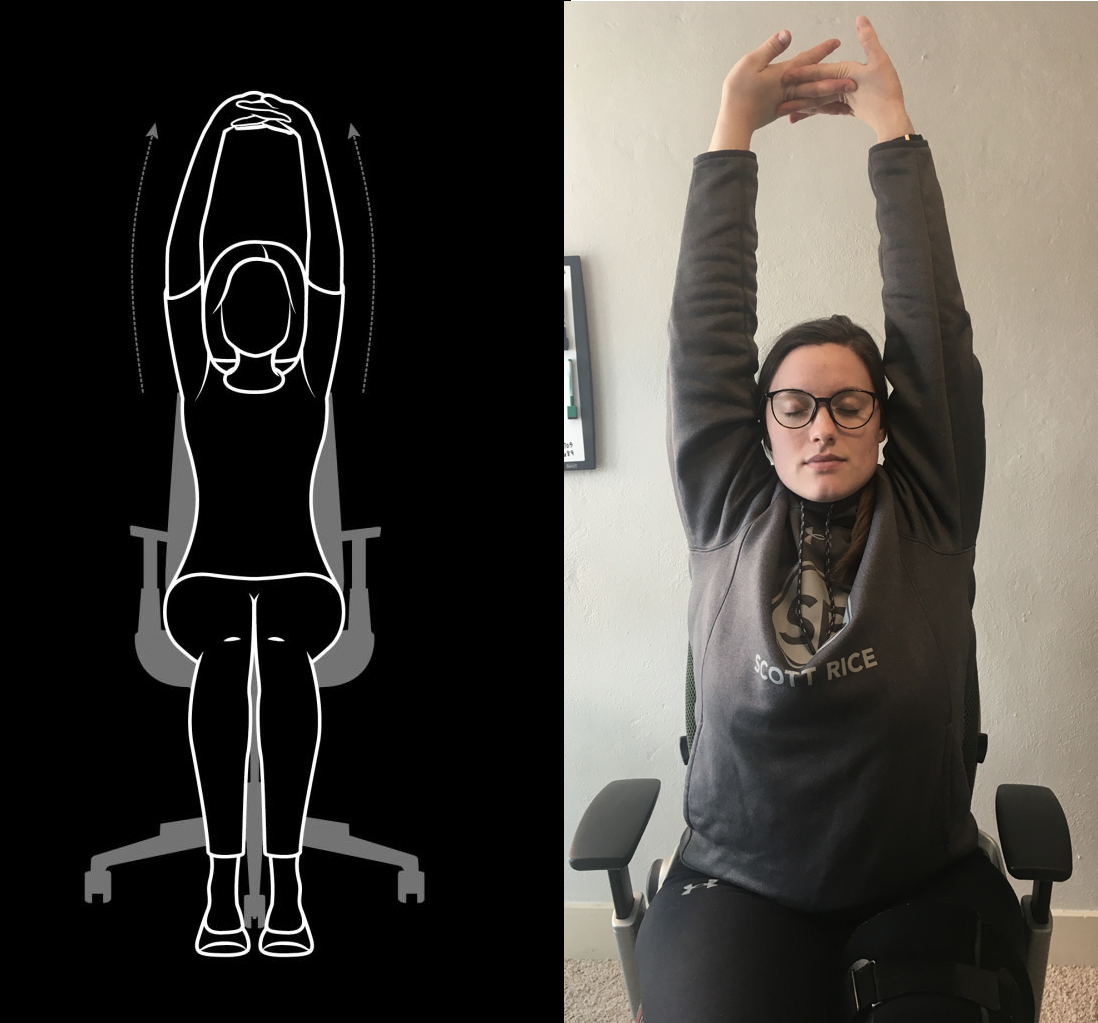 Pose 1: Interlace your fingers in front of you. With an inhale, extend hands and arms upward, palms toward the ceiling. With your exhale, fold your upper body forward over your legs, and reach your hands forward for a stretch. Hold for three to five breaths. When you’re ready, return to a neutral position. On your next inhale, stretch your arms above your head, fingers interlaced, palms up. This time, with your face toward the sky, reach backward, allowing your back to arch slightly. Remember to keep a long spine.
Pose 1: Interlace your fingers in front of you. With an inhale, extend hands and arms upward, palms toward the ceiling. With your exhale, fold your upper body forward over your legs, and reach your hands forward for a stretch. Hold for three to five breaths. When you’re ready, return to a neutral position. On your next inhale, stretch your arms above your head, fingers interlaced, palms up. This time, with your face toward the sky, reach backward, allowing your back to arch slightly. Remember to keep a long spine.
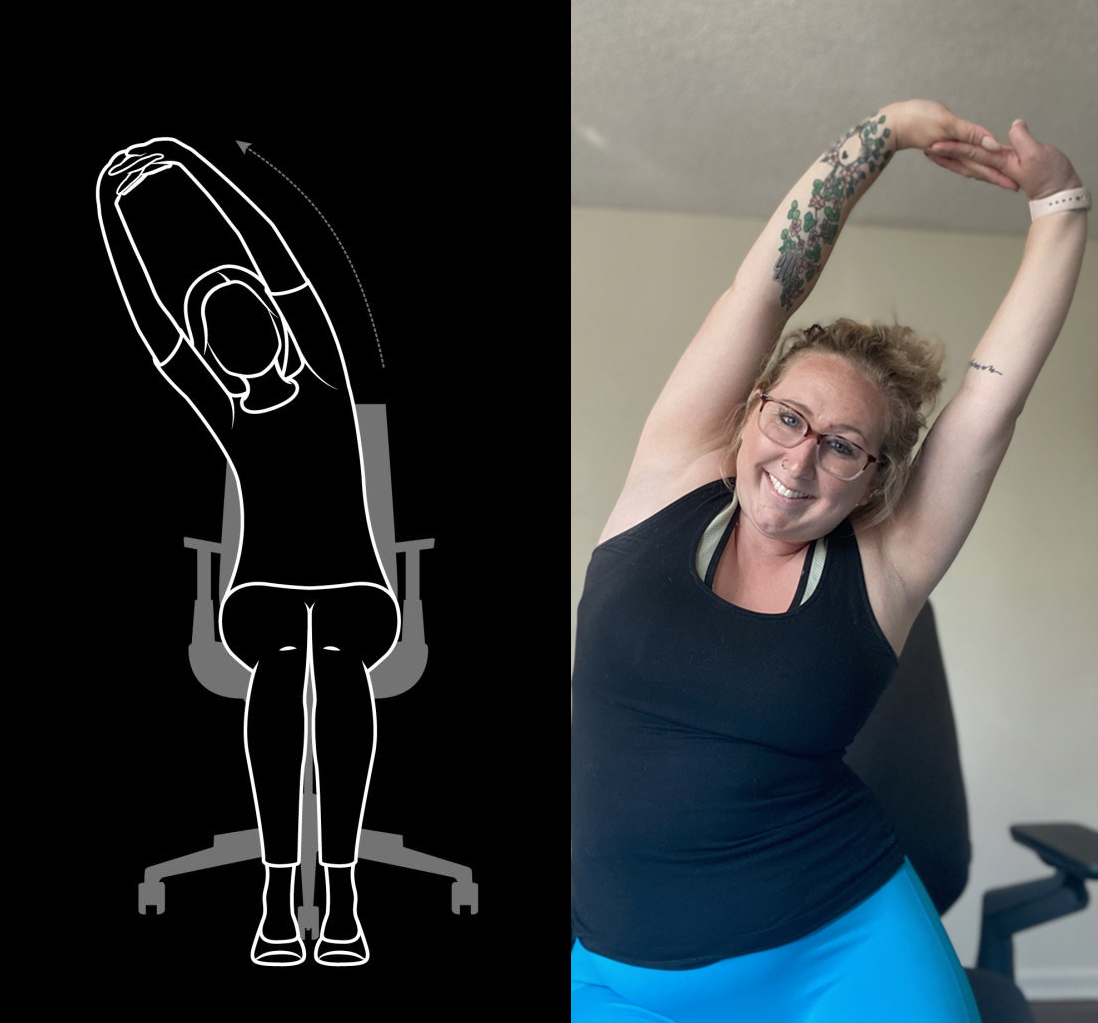
Pose 2: Interlace your fingers in front of you, and with an inhale extend your hands, palms up. As you exhale, reach your hands to the right so that you feel a stretch through the left side of your body. Hold for three to five breaths before returning to a neutral position. Repeat on the left side.
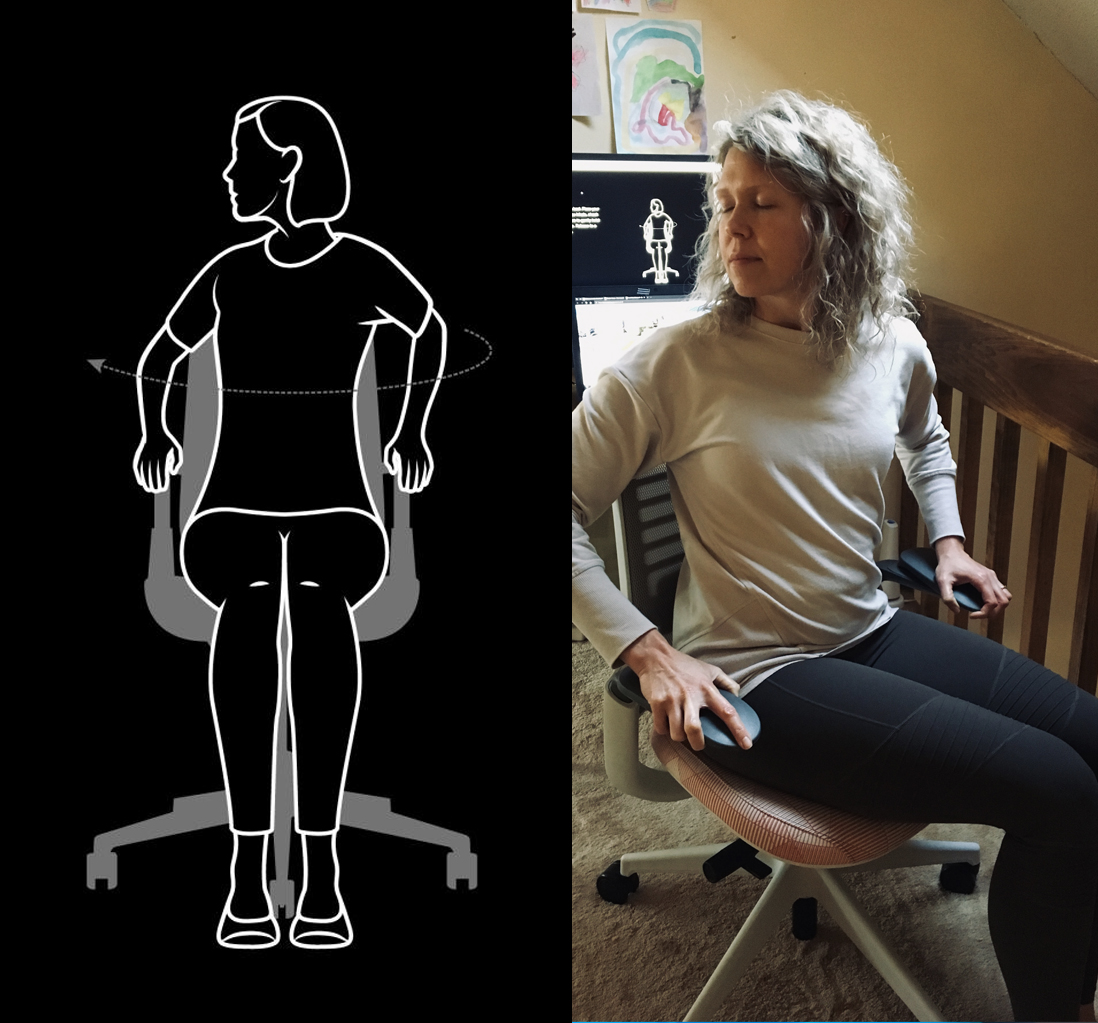
Pose 3: For this pose, closed eyes or a soft gaze is best. Place your hands on the armrest of the chair. As you inhale, check your posture. As you exhale, use your core to gently twist to the right. Hold for three to five breaths. Release to a neutral posiiton. Repeat on the left side.
HIPS
When our hips are tight, other parts of the body are forced to overcompensate, often causing discomfort in the lower back and knees over time. Because the hip is a ball-and socket joint, it is designed to move in a variety of directions, including rotationally. Practicing these simple movements can help increase hip flexibility and overall ease of movement.
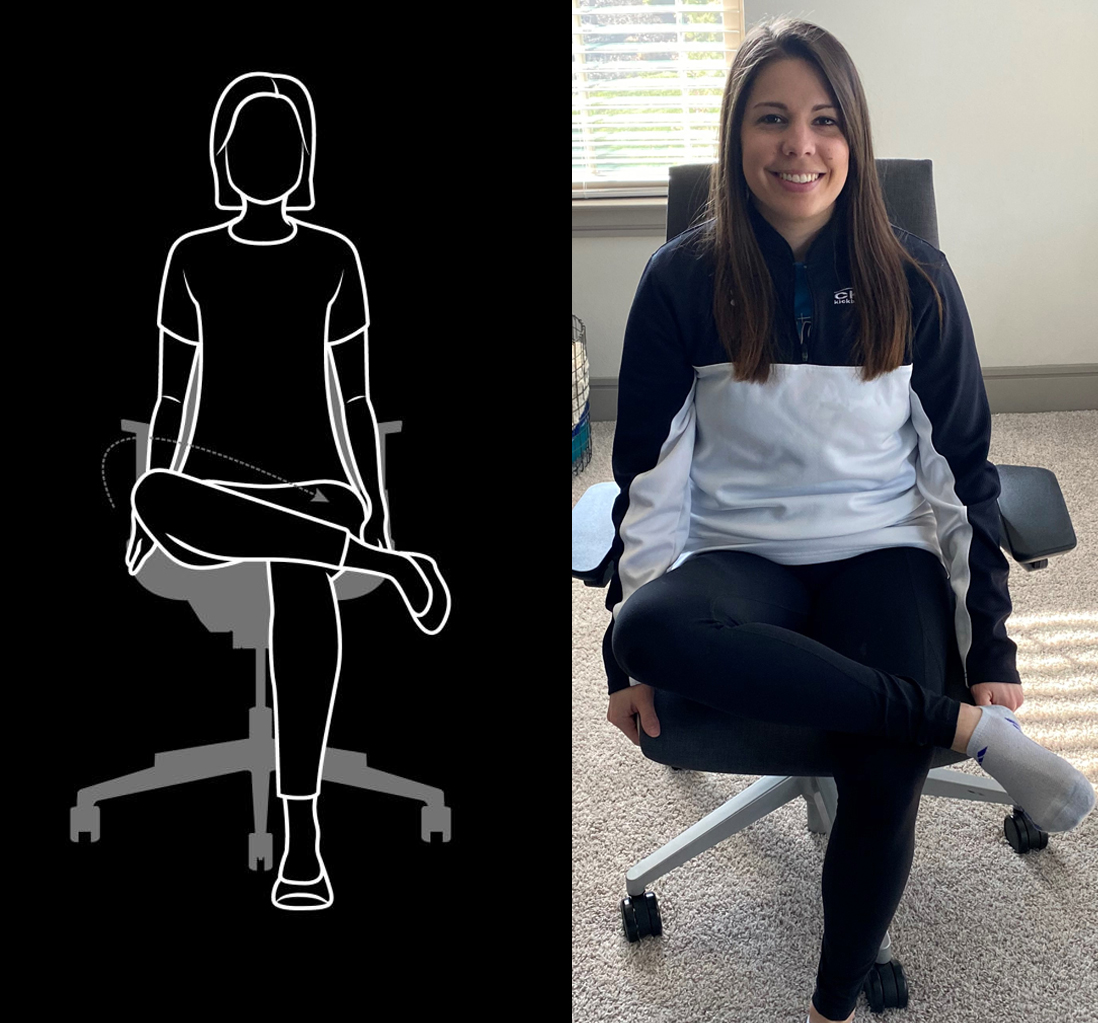
Seated Figure 4: On an inhale, raise your right ankle to the top of your left leg to create a figure 4. Hold for three to five breaths. Release to a neutral position. Repeat on the left side.
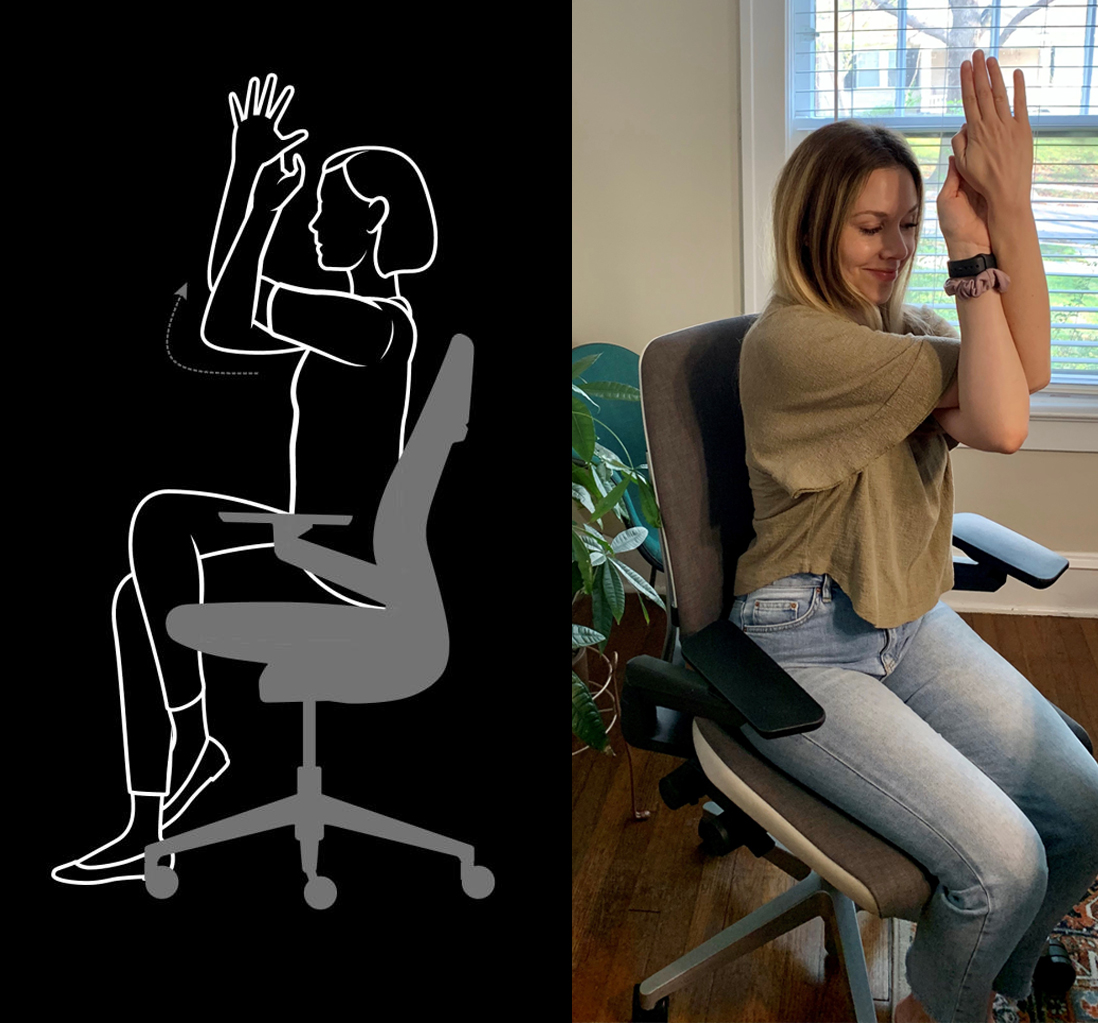
Seated Eagle: On an inhale, cross your right leg tightly over your left. IF your body allows, continue to wrap your right foot behind your left ankle. To take this pose to the next level, raise your arms out in front of you, shoulder height. Cross your right arm under your left arm and touch your palms together. Keep a long spine as you inhale and exhale for three to five breaths. Release to a neutral position. Repeat on the left side.
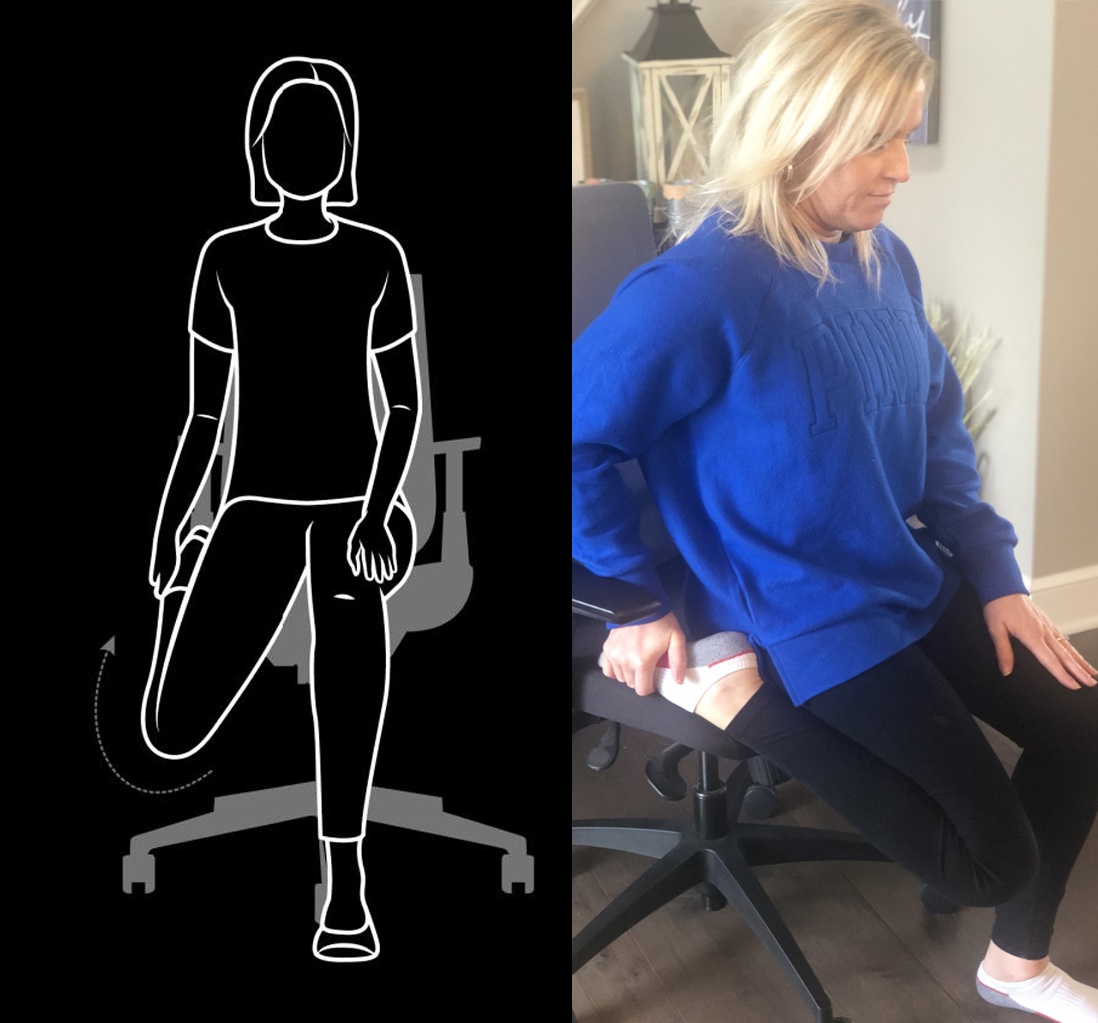
Seated Quad Stretch: Begin this pose on the front right edge of your chair. On an inhale, lift your right foot up; reach down with your right hand and grab your ankle or the top of your right foot. Pull your heel toward your body with your knee toward the ground, as you are able. Inhale and exhale three to five breaths, then repeat on the left side.
NECK, WRISTS AND EYES
The neck, wirsts and eyes are sensitive parts of the body, greatly affected by today’s workplace. With more time being spent hunched over computers, typing and staring at screens for extended periods of time, it’s important to take breaks throughout the day to give these areas special attention.

Neck: Begin by taking a deep breath in through your nose. On an exhale, allow your right ear to fall toward your right shoulder. Inhale and exhale for three to five breaths. Allow your head to roll down toward your chest and over to the left shoulder. Keep a long spine as you inhale and exhale for three to five breaths. Gently bring your head back up to the center.
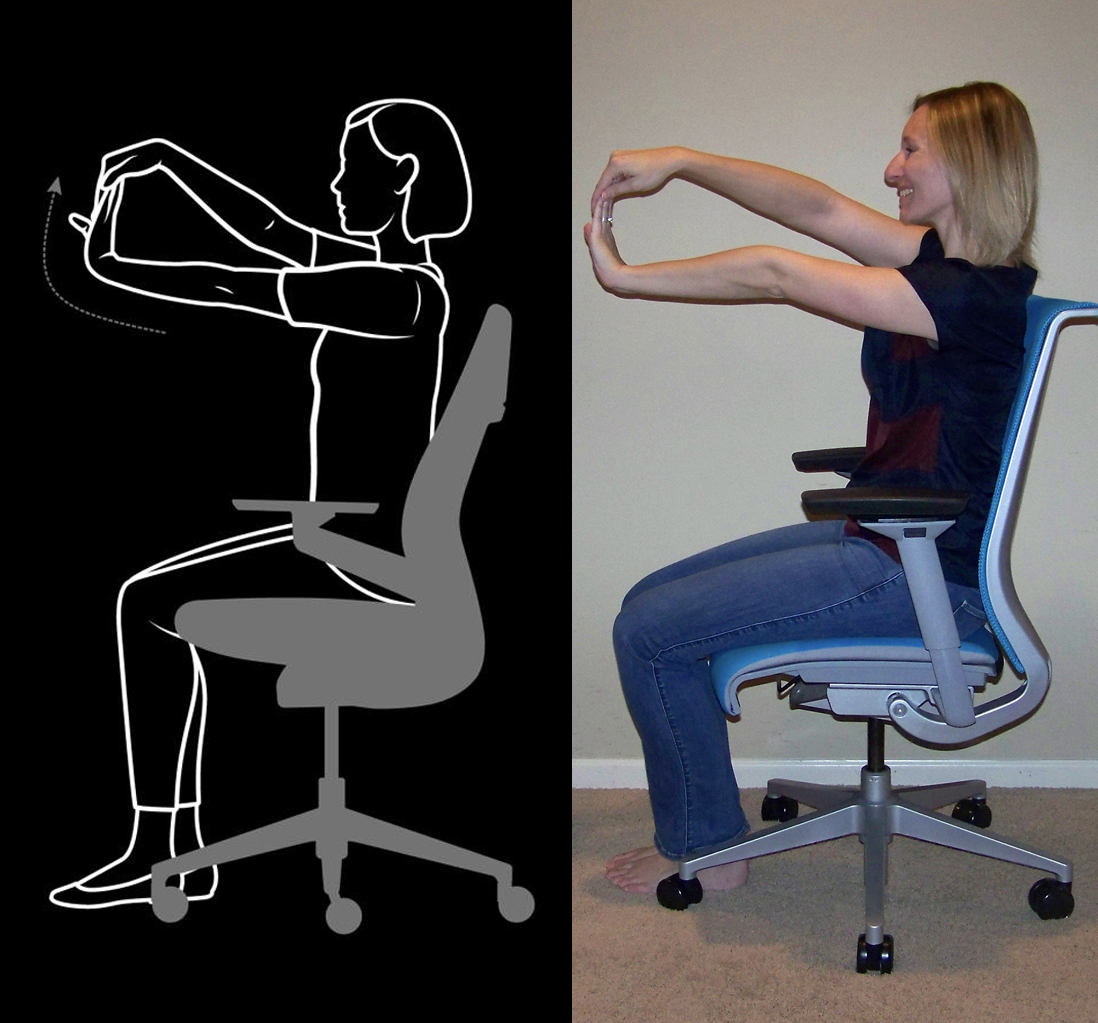
Wrists: Extend yoiur right arm out in front of you, parallel to the ground, palm away from your body. Use your left hand to gently pull back on the right hand and forearm. Hold for three to five breaths. Repeat on the left side.
 Eyes: Start with your elbows resting on your worksurface with your palms touching. Place your thumbs on the inner corners of your eye sockets. Keep your eyes closed and head down as you apply a comfortable amount of pressure. Hold for three to five breaths.
Eyes: Start with your elbows resting on your worksurface with your palms touching. Place your thumbs on the inner corners of your eye sockets. Keep your eyes closed and head down as you apply a comfortable amount of pressure. Hold for three to five breaths.
Article content provided by Steelcase
